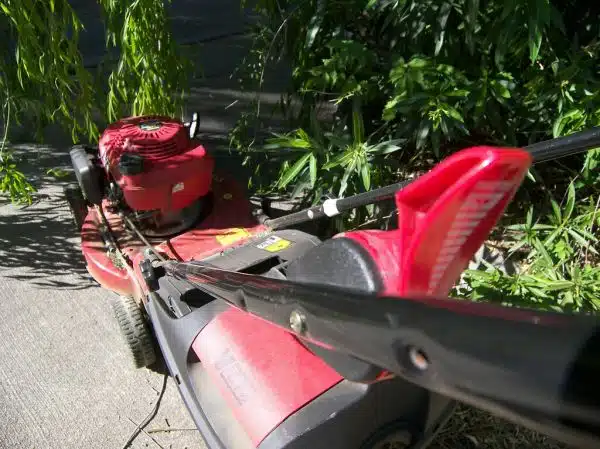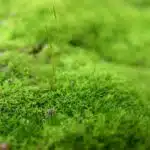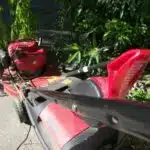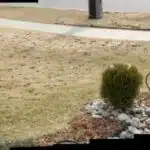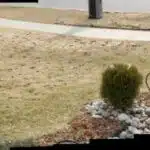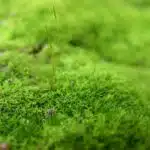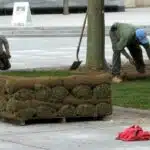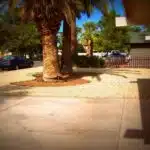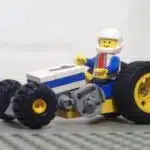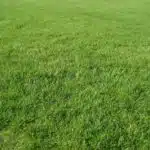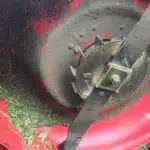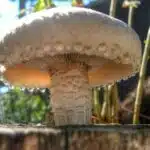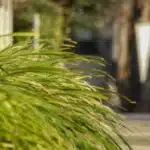Lawns are an important part of many landscapes and require regular maintenance to remain healthy and attractive. One aspect of lawn care that is often overlooked is dethatching. Dethatching involves the removal of dead grass and other organic matter that accumulates on the surface of a lawn over time. In this article, we will explore how to dethatch a lawn and why you need to make it a regular part of your landscape maintenance routine.
Dethatching can have numerous benefits for your lawn’s health and appearance. When too much organic matter builds up on the surface of a lawn, it can create a barrier that prevents water, air, and nutrients from reaching the roots. This can lead to poor growth, disease, and even death in some cases. By removing this debris through dethatching, you can improve soil penetration and allow your lawn to thrive. Additionally, dethatching can help improve the appearance of your lawn by promoting even growth and reducing bare patches. With proper technique and timing, dethatching can be an effective way to maintain a beautiful and healthy lawn.
Understanding The Importance Of Lawn Maintenance
Proper lawn maintenance is essential to ensure the health and beauty of your yard. Neglecting this task can have serious consequences, including a decrease in property value. Regular lawn care not only keeps your yard looking great, but it also provides several benefits for you and the environment.
One of the benefits of regular lawn maintenance is that it promotes healthy grass growth. This includes mowing, watering, and fertilizing your lawn on a consistent basis. By doing so, you will help prevent weed growth and disease outbreak while encouraging strong root development. Additionally, a well-maintained lawn can help reduce soil erosion and improve air quality.
Neglecting proper lawn care can have a significant impact on the value of your property. A poorly maintained lawn with excessive thatch buildup can make your yard look unkempt and unsightly. This can make it difficult to attract potential buyers or renters if you are looking to sell or lease out your property. However, by regularly dethatching your lawn, you can maintain its beauty and value for years to come.
A common cause of thatch buildup is improper lawn care practices such as over-fertilization or over-watering. Other causes include leaving grass clippings on the lawn after mowing or using poor-quality soil. In the next section, we will discuss some common causes of thatch buildup in more detail so that you can take preventative measures to keep your yard in top condition.
Common Causes Of Lawn Thatch Buildup
Overseeding is a common cause of thatch buildup, as the grass clippings can increase the thatch layer, making it difficult for water and air to reach the soil. Poor mowing practices, such as cutting too low or too often, can contribute to thatch buildup, as grass blades are more likely to die and decompose, forming a layer of thatch. To dethatch a lawn, it is important to use a vertical mower which will remove the thatch without damaging the lawn. Regular aeration of the lawn is also important to prevent thatch buildup, as it helps to break up the layer of thatch.
Overseeding
Overseeding is one of the best ways to prevent thatch buildup in your lawn. By adding new grass seed to your existing turf, you can help fill in bare spots and encourage new growth. The benefits of overseeding go beyond just preventing thatch buildup, however. It can also improve the overall health and appearance of your lawn.
When choosing the best grass types for overseeding, it’s important to consider factors like climate, soil type, and sun exposure. Some popular options include Kentucky bluegrass, perennial ryegrass, and fescue varieties. These grasses are known for their ability to grow quickly and establish strong roots, which helps them withstand heavy foot traffic and other stresses.
By regularly overseeding your lawn, you can keep it looking lush and healthy year-round while also preventing thatch buildup from becoming a problem. Not only will this make your property more attractive, but it can also increase its value over time. So if you want a beautiful lawn that’s easy to maintain, consider incorporating overseeding into your landscaping routine today!
Poor Mowing Practices
To maintain a healthy lawn, it’s essential to follow proper mowing techniques. Poor mowing practices are one of the common causes of thatch buildup in lawns. When grass is cut too short, it can cause stress on the plants, leading to weak root systems and increased thatch accumulation. Additionally, when clippings are left on the lawn instead of being removed, they can contribute to thatch buildup.
To avoid poor mowing practices, it’s important to use the right equipment and techniques for your specific type of grass. For example, different grass varieties require different cutting heights and frequencies. It’s also important to keep blades sharp to ensure clean cuts and prevent tearing of the grass blades.
By following proper mowing techniques, you can improve lawn health and reduce the risk of thatch buildup. Regularly removing clippings and maintaining a cutting height appropriate for your specific type of grass will help promote strong root development and overall lawn health improvement.
Signs That Your Lawn Needs Dethatching
To maintain a healthy and attractive lawn, it is important to keep an eye out for warning signs that indicate the need for dethatching. A common sign is the accumulation of dead grass, also known as thatch, on top of the soil. This layer of organic matter can prevent water, air, and nutrients from reaching the roots of your grass. As a result, your lawn may start to look thin, discolored, or patchy. To prevent this from happening, it is recommended to dethatch your lawn at least once a year.
Another warning sign that you may need to dethatch your lawn is if you notice an increase in pest activity or disease. Thatch can create a conducive environment for pests and diseases such as grubs, chinch bugs, and fungi to thrive. If left unchecked, these issues can cause significant damage to your lawn and require expensive treatments to fix. Therefore, it’s crucial to take preventative measures by regularly dethatching your lawn.
Prevention methods for thatch buildup include proper mowing techniques and regular fertilization. When mowing your lawn, make sure not to cut more than one-third of the blade length at once. This will reduce stress on the grass and minimize the amount of clippings left behind on the soil surface. Additionally, applying fertilizer at appropriate times throughout the year can help promote healthy growth and reduce the likelihood of excessive thatch accumulation.
Moving onto the next step of dethatching your lawn requires specific tools and equipment needed for effective results.
Tools And Equipment Needed For Dethatching
After identifying the signs that your lawn needs dethatching, it is crucial to learn how to dethatch a lawn and why it is essential. Dethatching involves removing the layer of dead grass, stems, and other debris that accumulate on the lawn over time. This layer creates a barrier that prevents air, water, and nutrients from reaching the soil beneath, which can result in stunted growth or even death of your grass.
To dethatch a lawn effectively, you need to have the right tools and equipment. One of the essential tools you’ll require is a dethatching blade. Types of blades include fixed knife blades, spring tines blades, and flail blades. Fixed knife blades are suitable for lawns with thick thatch layers while spring tines are better for thinner layers. Flail blades are versatile and can work in various situations.
When using any tool or equipment for dethatching your lawn, safety precautions should be observed at all times. Wear protective clothing like gloves, long pants, boots with slip-resistant soles, and goggles or safety glasses to protect against flying debris. Before starting the process, remove rocks and other objects from your lawn that could damage your equipment or cause injury.
Preparing your lawn for dethatching involves several steps like mowing your grass short before starting the process to make it easier to see what you’re doing. You may also need to water your lawn thoroughly if it’s dry to loosen up the soil before dethatching as this will make it easier for you to penetrate through the thatch layer without causing damage to your grass roots. Additionally, mark any sprinkler heads or underground utilities on your yard before starting as they may get damaged during dethatching if not correctly marked out beforehand.
Preparing Your Lawn For Dethatching
Before you start dethatching your lawn, it is crucial to prepare the soil and ensure that your lawn is healthy. Just like how a chef prepares their ingredients before cooking, you must also prep your lawn before dethatching. A healthy lawn will not only make the process of dethatching more manageable but also increase its effectiveness.
Lawn health is essential in maintaining a beautiful and lush landscape. Therefore, before dethatching, it is vital to mow your grass short to allow easy access to the roots and soil. This step will also enable you to see the bare spots in your turf better. Once you have identified these areas, it’s time to inspect them for any underlying issues such as compaction or disease. It’s essential to address these concerns before dethatching because they can hinder the growth of new grass after the process.
Soil preparation is another critical factor in ensuring successful dethatching. Before starting this process, take time to aerate your soil to loosen compacted dirt and allow oxygen and water to penetrate deeper into the root system. Additionally, fertilizing your lawn with nitrogen-rich fertilizer helps stimulate growth and ensures that new grass blades will grow strong after removing the old ones. By nourishing your soil, you create an environment where new grass can thrive even after undergoing stress from dethatching.
With proper preparation of your lawn’s health and soil quality, you are well on your way to achieving a beautiful landscape through dethatching. The next section will discuss the proper technique for dethatching using various tools such as rakes and power machines without causing damage to your turf.
Proper Technique For Dethatching
After preparing your lawn for dethatching, it’s time to move on to the actual process. Dethatching is the removal of dead grass, roots and other debris that accumulate in between the soil and blades of grass. This buildup can prevent water and essential nutrients from reaching the roots of your lawn, causing it to become weak and unhealthy. Knowing how to properly dethatch your lawn will help ensure that your grass remains healthy, lush and green.
Technique tips:
- Start by setting your dethatcher blades at a shallow depth, about 1/8 inch deep. This will allow you to remove only the dead material without damaging the living grass.
- Work in parallel rows across your yard, overlapping each pass slightly to ensure complete coverage.
- Once you’ve finished dethatching, be sure to rake up all of the debris left behind. Leaving it on your lawn can cause more harm than good.
Best practices:
- It’s important to dethatch when your lawn needs it. Over-dethatching can cause damage to healthy grass and lead to further problems down the line.
- The best time of year to dethatch depends on where you live and what type of grass you have. For cool-season grasses like Kentucky bluegrass or fescue, early spring or early fall is ideal. Warm-season grasses like Bermuda or zoysia should be dethatched in late spring or early summer.
Knowing how to properly dethatch your lawn is an essential part of maintaining a healthy yard. By following these technique tips and best practices, you can ensure that your lawn stays lush and green all season long. But when exactly should you schedule this task? Let’s take a look at when it’s best to dethatch your lawn in order to keep it looking its best year-round.
When To Dethatch Your Lawn
Picture a lush green lawn that looks straight out of a magazine. Every blade of grass is perfectly trimmed and the turf is impeccably maintained. But, as time passes, even the best lawns can fall victim to an accumulation of dead organic matter known as thatch. This layer of decaying plant material can prevent nutrients and water from reaching the roots of your grass, leading to a less vibrant and healthy lawn.
To avoid this problem, it’s important to dethatch your lawn regularly. The best timings for dethatching depend on the type of grass you have and your climate conditions. In general, cool-season grasses should be dethatched in early spring or fall, while warm-season grasses should be done in late spring or summer when they are actively growing.
The benefits of dethatching extend beyond just improving nutrient absorption. It can also help reduce the risk of fungal infections, improve air circulation around your lawn, and create a more even playing surface if you use your yard for sports or other activities. By incorporating regular dethatching into your landscape maintenance routine, you can ensure that your lawn stays healthy and beautiful all year round.
As an expert in landscape maintenance, I highly recommend scheduling regular dethatching sessions based on the specific needs of your lawn. By doing so, you’ll be able to enjoy all the benefits that come with a well-maintained lawn without worrying about any negative side effects. In the next section, we’ll explore how often you should be scheduling these sessions to keep your lawn looking its best all year long.
How Often To Dethatch Your Lawn
Knowing how often to dethatch your lawn can be the difference between a healthy and vibrant yard or one that is struggling to thrive. The frequency with which you should dethatch your lawn depends on several factors, including the type of grass, soil conditions, and climate in your area. Generally, it is recommended that you dethatch your lawn every two to three years.
The best time to dethatch your lawn is during the growing season when the grass is actively growing. This allows the grass to recover quickly after being dethatched. However, it is important to avoid dethatching during periods of drought or extreme heat as this can cause further stress on your lawn.
To ensure that you are properly maintaining your lawn and preventing thatch buildup, consider these tips:
- Regularly mow your lawn at the appropriate height for your type of grass.
- Avoid over-fertilizing or over-watering as this can contribute to thatch buildup.
- Aerate your lawn annually to promote healthy root growth and prevent soil compaction.
By following these tips and being mindful of how often you need to dethatch your lawn, you can keep your yard looking its best year-round. In the next section, we will explore alternative methods for removing lawn thatch.
Alternative Methods For Removing Lawn Thatch
Another method for removing lawn thatch involves the use of mulching mowers. These types of mowers have special blades that chop grass clippings into smaller pieces, which then decompose back into the soil. This process can help break down excess thatch and improve the health of your lawn. However, it is important to note that this method may not be as effective as dethatching with a specialized tool.
Manual dethatching is another alternative method for removing excess thatch from your lawn. This process involves using a rake or specialized dethatching tool to physically remove the buildup of organic matter. While this can be a labor-intensive process, it can be effective in improving soil health and promoting better growth for your grass. However, manual dethatching should only be attempted on small areas of your lawn and not used as a replacement for regular maintenance.
It is important to remember that alternative methods for removing lawn thatch may not be as effective as traditional dethatching techniques. Additionally, these methods may require more time and effort on your part. However, incorporating these techniques into your regular lawn care routine can help promote healthy soil and lush green grass. In the next section, we will discuss aftercare tips to ensure your newly-dethatched lawn stays healthy and strong.
Aftercare For Your Lawn After Dethatching
Post dethatching care is essential to ensure that your lawn remains healthy and lush. After dethatching, your lawn may look a bit bare and unsightly, but with proper care, it will quickly recover. The benefits of dethatching include improved nutrient absorption and better water retention, which promotes healthy root growth.
One of the most important things you can do after dethatching is to fertilize your lawn. A high-quality fertilizer will provide the necessary nutrients for your lawn to grow strong and healthy. Be sure to follow the instructions on the package carefully and apply the fertilizer evenly across your lawn.
Another crucial aspect of post dethatching care is watering your lawn. Your lawn will need more water than usual after dethatching, so be sure to water it frequently, especially during hot weather conditions. Watering deeply once or twice a week is better than frequent shallow watering as it encourages deep root growth.
- Proper post-dethatching care ensures that your lawn remains healthy and attractive
- Fertilizing helps provide essential nutrients for healthy growth
- Watering deeply helps promote deep root growth
- Consistent watering during hot weather conditions helps prevent drought stress
- Regular mowing and pest control also contribute to maintaining a healthy lawn
In caring for your newly dethatched lawn, proper post-dethatching care is crucial in ensuring its health and longevity. By performing regular maintenance such as fertilizing, watering, pest control, and regular mowing, you can maintain a beautiful-looking yard throughout the year. In our next section about fertilizing and watering your lawn, we’ll discuss the best practices that will help keep your newly rejuvenated yard looking vibrant for years to come!
Fertilizing And Watering Your Lawn
Fertilizing and watering are two essential components of lawn maintenance. Fertilizing frequency depends on the type of grass, soil quality, and time of year. Generally, it is recommended to fertilize your lawn three to four times a year. It is also essential to choose the right fertilizer for your lawn as different types of grass require different nutrients.
Watering techniques are equally important when it comes to maintaining a healthy lawn. The amount of water required depends on the type of grass, soil quality, and weather conditions. Overwatering or underwatering can lead to various problems such as disease or pests. It is best to water deeply but infrequently, allowing the roots to absorb moisture and nutrients from the soil.
Soil preparation is necessary before fertilizing or watering your lawn. A healthy lawn requires nutrient-rich soil that can retain moisture and allow proper drainage. Soil testing can help determine any deficiencies that need addressing through the addition of organic matter or soil amendments. Nutrient delivery through fertilization and watering will be more effective if the soil is properly prepared beforehand.
Transition: Now that we have discussed proper fertilizing and watering techniques for your lawn let’s move on to another crucial step in maintaining a healthy yard – aerating your lawn for improved soil penetration.
Aerating Your Lawn For Improved Soil Penetration
Ironically, one of the best ways to improve soil penetration in your lawn is by poking holes in it. This technique, called aerating, involves creating small pockets of air within the soil to allow nutrients and water to reach the roots more efficiently. Although this may seem counterintuitive at first glance, the benefits of aeration are widely recognized in the landscaping industry.
Soil compaction is a common issue that can occur when your lawn sees frequent traffic or heavy machinery usage. Over time, this compaction reduces the amount of space between soil particles and makes it difficult for water and oxygen to penetrate deeply into your lawn’s root system. By aerating your lawn, you can break up this compacted soil and alleviate some of these issues.
Here are five additional benefits of aerating your lawn:
- Improved drainage: Aeration helps water flow through your soil more easily, reducing runoff and standing water.
- Increased fertilizer effectiveness: When applied after aeration, fertilizers can better reach the roots of your grass.
- Reduced thatch buildup: Aerating helps break down thatch buildup by increasing microbial activity in the soil.
- Enhanced root growth: The small pockets created by aeration provide room for roots to grow deeper and stronger.
- Overall health improvement: By improving nutrient uptake and reducing stress on grass roots, aerating can help create a healthier-looking lawn.
By now, you know how important it is to aerate your lawn to improve soil penetration. However, preventing thatch buildup in the future is equally important. In the next section, we’ll explore some tips for keeping thatch under control so you won’t need to perform as much maintenance on your lawn moving forward.
Preventing Lawn Thatch Buildup In The Future
To prevent lawn thatch buildup in the future, there are a few things you can do. One of the best ways is to regularly aerate your lawn. This process involves punching small holes in the soil to allow air, water, and nutrients to penetrate deeper into the root system. Lawn aeration also helps to break up any compacted soil, which can contribute to thatch buildup over time.
Another effective way to prevent lawn thatch buildup is through proper composting techniques. Composting involves breaking down organic matter into a nutrient-rich soil amendment that can be used on your lawn and garden. By adding compost to your lawn regularly, you can help promote healthy microbial activity in the soil, which in turn helps to break down any thatch buildup.
Lastly, it’s important to avoid over-fertilizing your lawn as this can contribute to an excessive buildup of thatch. Instead, use a slow-release fertilizer and only apply it according to the recommended application rate. By following these simple tips, you can help keep your lawn healthy and free from unwanted thatch buildup.
Transition: Now that we’ve discussed some preventative measures for avoiding thatch buildup, let’s take a look at some common mistakes you should avoid when dethatching your lawn.
Common Mistakes To Avoid When Dethatching Your Lawn
Preventing Lawn Thatch Buildup in the Future is a crucial step to ensure that your lawn stays healthy and lush. However, if you have already experienced thatch buildup, then dethatching becomes a necessary step. Dethatching involves removing the layer of dead grass and other organic matter that accumulates on top of the soil over time. This layer can prevent water, air, and nutrients from reaching your grass roots.
Common mistakes to avoid when dethatching your lawn include using a rake or power rake aggressively, which can damage your turfgrass roots. Another mistake is not properly preparing your lawn before dethatching, such as mowing it too short or watering it insufficiently. Additionally, not using the correct equipment or technique can lead to uneven removal of thatch.
Tips for maintaining a healthy lawn during the summer include watering deeply but infrequently to encourage deep root growth and mowing regularly but not too short to promote strong blades. Fertilizing appropriately and aerating as needed can also improve the overall health of your lawn. By following these tips and avoiding common mistakes when dethatching, you can ensure that your lawn stays healthy and vibrant throughout the summer months.
If you find yourself unsure about how to properly dethatch your lawn or are concerned about causing damage, seeking professional help may be beneficial. Professional landscape maintenance companies have experience and knowledge with this process and can provide you with expert advice on how best to care for your lawn. With their assistance, you can enjoy a beautiful and thriving lawn all year round.
Seeking Professional Help For Dethatching Your Lawn
While it may seem simple to dethatch your lawn on your own, there are professional benefits that come with seeking the help of a landscape maintenance expert. One anticipated objection is the cost of hiring a professional. However, it is important to consider the long-term cost effectiveness of having a healthy and well-maintained lawn.
One benefit of hiring a professional for dethatching is their expertise in identifying the proper tools and techniques for your specific lawn. They can also ensure that the job is completed thoroughly and efficiently, reducing the risk of damage to your grass or soil. Additionally, professionals have access to specialized equipment that may not be available to homeowners.
Overall, seeking professional help for dethatching your lawn can save you time and money in the long run while ensuring optimal results. It allows you to focus on other tasks while leaving the hard work to experts who have experience in this area. So, if you’re looking for an effective way to keep your lawn healthy and lush, consider reaching out to a landscape maintenance company for assistance with dethatching.
Conclusion
In conclusion, maintaining a healthy and vibrant lawn requires proper care and attention. Dethatching is an essential process that should not be overlooked if you want to keep your lawn looking lush and green. Identifying the signs of lawn thatch buildup is crucial in preventing further damage to your grass.
When dethatching your lawn, it is important to follow the right steps to avoid causing more harm than good. Proper preparation and maintenance can help prevent future thatch buildup. As a landscape maintenance expert, I highly recommend seeking professional help if you are unsure about how to go about dethatching your lawn.
A well-maintained lawn not only adds beauty to your property but also provides a peaceful retreat for you and your loved ones. With the right tools and knowledge, dethatching can be a straightforward process that yields excellent results. Remember, regular maintenance is key to keeping your lawn healthy and thriving year-round. So why wait? Start planning for your next dethatching session today!
Image Credits
- “Lawns” by jezuez471 (featured)

